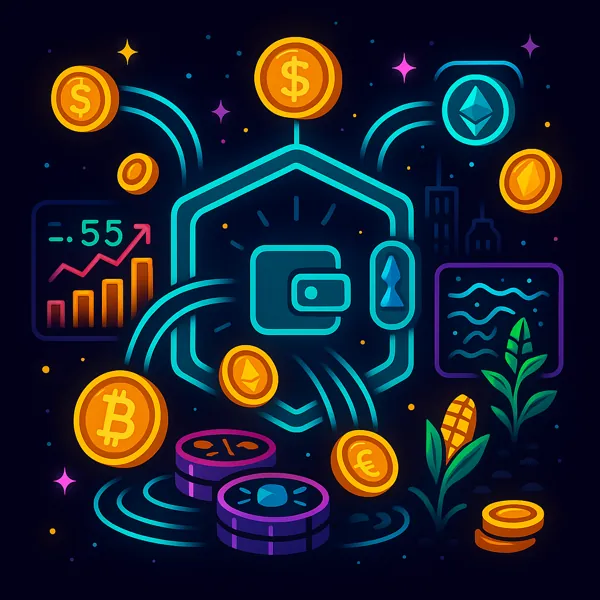Banks close at 5pm. DeFi runs 24/7. No middlemen, no paperwork, just pure peer-to-peer money moves. That’s the magic of Decentralized Finance (DeFi) — the system that lets you lend, borrow, trade, and earn yield using only your wallet. If you’ve ever staked, farmed, or aped into a liquidity pool, you’ve already touched DeFi. But what is it really, and why does it matter? Let’s break it down.
What Is DeFi?
DeFi = financial services built on blockchains (mainly Ethereum, but also Solana, BNB, Avalanche, Base, etc.). Instead of banks or brokers, smart contracts handle the rules.
In DeFi, you keep custody of your assets. You don’t need permission to use it, and anyone in the world with internet can participate.
Core Features of DeFi
- Decentralized exchanges (DEXs): Uniswap, PancakeSwap, Raydium — trade tokens instantly without intermediaries.
- Lending & borrowing: Aave, Compound — deposit assets to earn interest or borrow against your crypto.
- Stablecoins: USDT, USDC, DAI — the backbone of DeFi, letting you transact without volatility.
- Yield farming: Provide liquidity to earn fees + token rewards.
- Staking: Lock tokens to secure networks and earn passive yield.
- Derivatives & synthetics: Trade tokenized stocks, indexes, or even prediction markets (Synthetix, Polymarket).
Why DeFi Matters
- Accessibility: Billions are unbanked. DeFi only needs a phone + internet.
- Transparency: Everything is on-chain, visible to anyone.
- Programmability: New financial products can be coded and deployed fast.
- Ownership: “Not your keys, not your coins” — DeFi puts you in control.
Real-World Impact
- In Nigeria and Argentina, people use DeFi stablecoins to escape inflation.
- Farmers in Asia use Aave/Compound to access loans without banks.
- Degens everywhere farmed insane APYs in DeFi Summer 2020, when protocols like Yearn, Curve, and SushiSwap exploded.
Risks of DeFi
- Smart contract bugs: Code errors can drain protocols. Over $3B was lost to hacks in 2023 alone.
- Rug pulls: Devs abandon projects and run off with liquidity.
- Volatility: Collateral can crash and liquidate borrowers.
- Complexity: For beginners, terms like LP tokens and impermanent loss feel like another language.
Key Players in DeFi (2025 Snapshot)
- Uniswap: Largest DEX on Ethereum, billions in daily volume.
- Curve: Stablecoin liquidity king.
- Aave: Lending giant with multi-chain presence.
- MakerDAO: Issuer of DAI, the OG decentralized stablecoin.
- Lido & Rocket Pool: ETH staking leaders.
- Polymarket: Prediction markets where you can bet on elections, sports, or even memes.
The Future of DeFi
- Cross-chain growth: Bridges, LayerZero, and Wormhole connect ecosystems.
- Real-world assets (RWA): Tokenized bonds, real estate, and stocks entering DeFi.
- Institutional adoption: Banks are exploring DeFi rails for settlements.
- Better UX: Wallets and apps are getting friendlier for normies.
Final Thoughts: DeFi Is the Real Revolution
DeFi is the reason crypto is more than just a casino. It’s the infrastructure that replaces banks, brokers, and middlemen with code. Yes, it’s risky. Yes, it’s complicated. But it’s also the most open, permissionless financial system humanity has ever seen.
Whether you’re yield farming on Solana, staking ETH on Lido, or swapping memecoins on Uniswap, you’re already living the DeFi life. The question isn’t if DeFi will win — it’s how fast.
Stay curious, stay safe, and degen responsibly. Wagmi. 🚀


